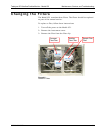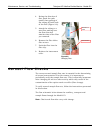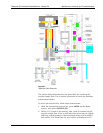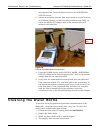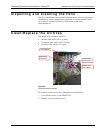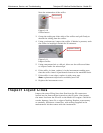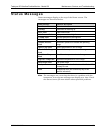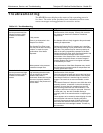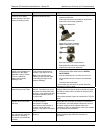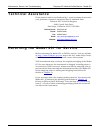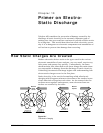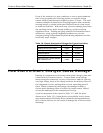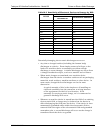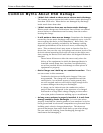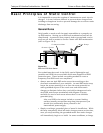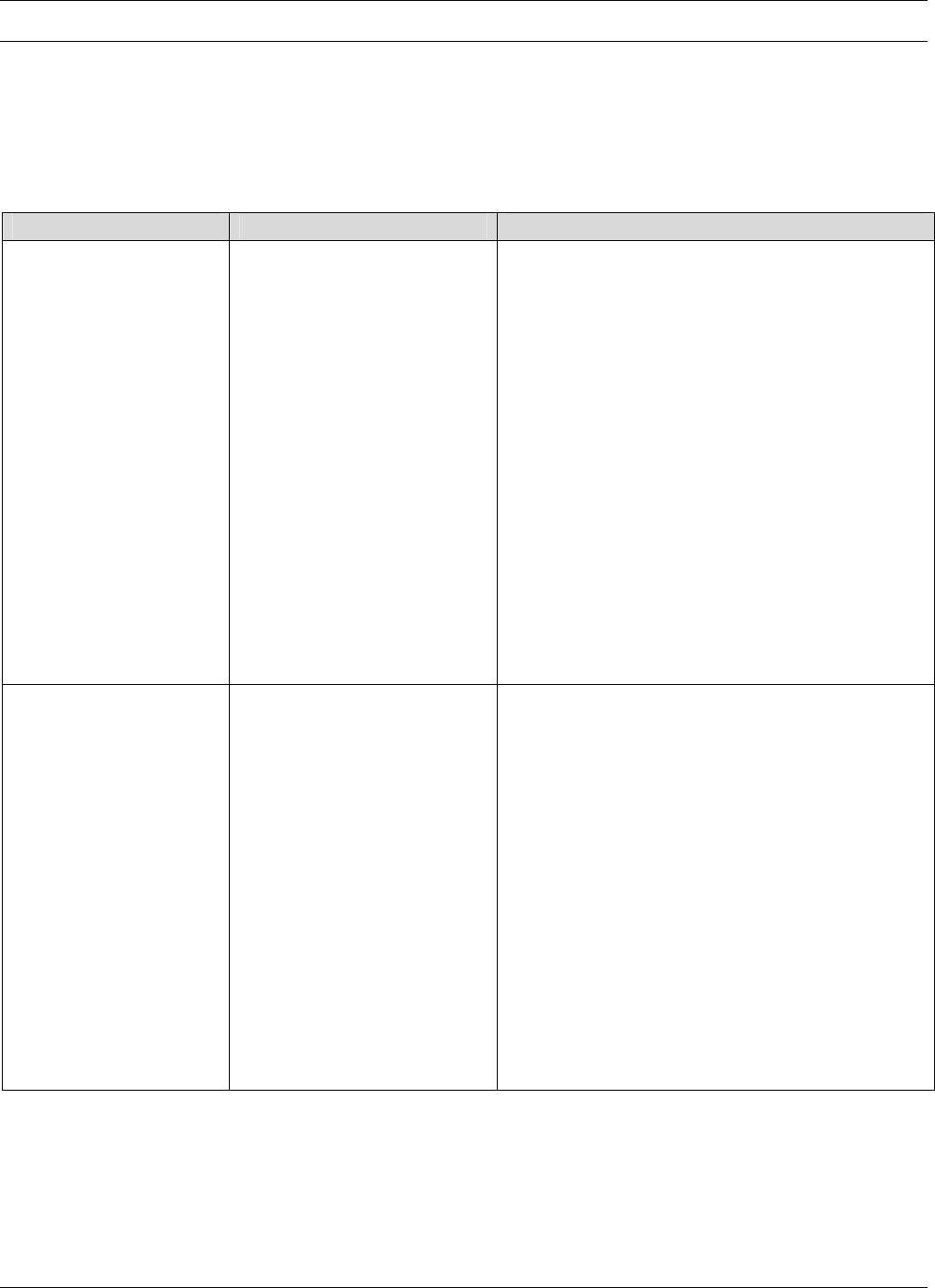
Maintenance, Service, and Troubleshooting Teledyne API Ultrafine Particle Monitor - Model 651
88 07506C DCN6727
Troubleshooting
The STATUS screen displays the status of the operating parts in
live-time. The table below provides basic information about some
status messages and suggestions for corrective action.
Table 9-2 Troubleshooting
Problem Cause Suggestions
Nozzle fault indicated on
the Home screen and low
Nozzle Pressure (<50%)
indicated on the Status
screen.
Low sample flow.
Likely causes:
There is an obstruction in the
Sample Flow Orifice.
The Sample Flow Filter is wet.
This may result after a flooding
incident, or result from poor
performance of the Water
Separator.
Water present in the pressure
transducer sample lines.
Verify 0.12 L/min inlet flow as described in the Flow
Checks section of this chapter. If flow is OK, check for
the presence of water in the Pressure Transducer
sample lines.
The Sample Orifice is likely clogged or dirty and needs
cleaning or replacement.
Replace the Sample filter if it appears wet. A wet filter
may indicate flooding or poor performance of the Water
Separator. The problem may be seen as presence of
water in the tubing immediately upstream of the filter.
Replace the Sample Filter. Also mark flow direction with
a marker and remove the filter Screen found
downstream of the Sample Filter. Use compressed air
to blow back through the Screen to remove trapped
material. Replace the Screen in its original orientation
as indicated by the mark.
Poor performance of the Water Separator may result if
the instrument is operated outside its temperature and
humidity specification range.
Nozzle fault indicated on
the Home screen and high
Nozzle Pressure (>300%)
indicated on the Status
screen.
The pressure over the nozzle is
high indicating that the nozzle
may be plugged or the path
ahead of the nozzle is
obstructed. Obstruction may be
due to an improperly installed,
twisted wick or the presence of
excess water.
Verify 0.12 L/min inlet flow as described in the Flow
Checks section of this chapter.
Disconnect the water bottle and remove the inlet block
and wick assembly as described earlier in this chapter.
If the Nozzle Pressure % remains high, the nozzle is
plugged. The nozzle is not user serviceable, contact
TSI.
If the Nozzle Pressure % drops to near 100% after wick
assembly removal, a restriction in the wick cartridge is
indicated. Unscrew the wick cartridge from the inlet
block and the growth tube from the conditioner. Look
through the wick tube to verify an open path. If there is
no clear path, (e.g. the wick is twisted causing a
blockage), refer to the manual section on replacing the
wick.
If there appears to be excessive water dripping from the
instrument after inlet removal, flooding may have
occurred. Disconnect the water fill bottle at the quick
disconnect and allow the instrument to run for a few
hours without the wick cartridge installed. This will dry
the instrument.




